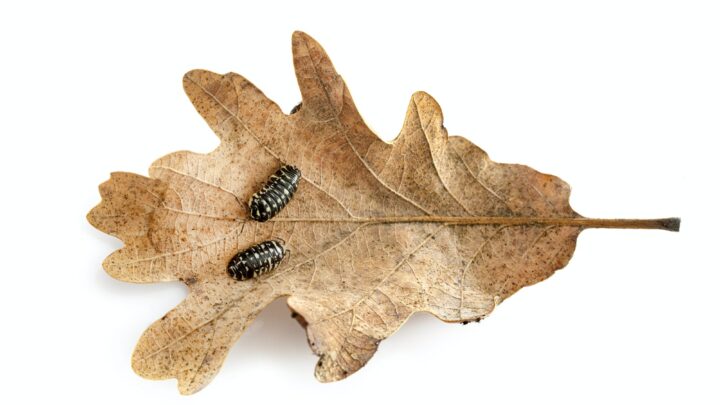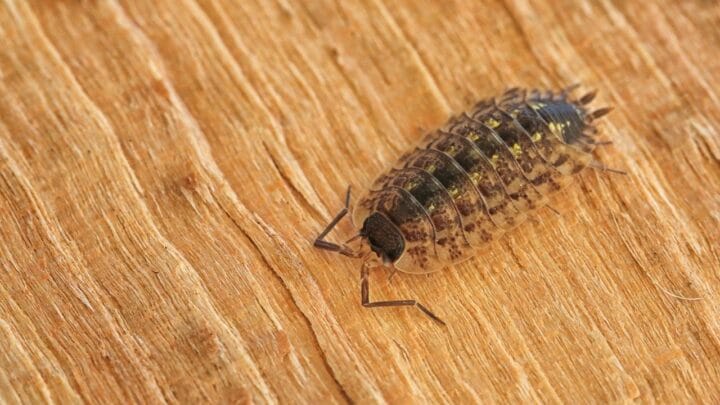Isopods are small species that consist of around 10,000 species that are either aquatic or terrestrial. You’ve more than likely come across terrestrial isopods in your life.
Common types include roly-polies, pillbugs, and woodlice. That’s not to say that you won’t come across aquatic isopods.
Isopods stick to damp and dark environments.
In this article, I am going to talk about why isopods prefer dark environments.
Why Isopods Prefer Dark Environments
Isopods predominantly reside in dark environments because of their evolution. Terminal isopods evolved from their aquatic counterparts. While they may live on land, they still have gills. Staying in environments that are dark and damp prevents them from drying out.

Why Isopods Prefer Dark Environments
What Evolution Has To Do With Isopod Habitat Preference
Aquatic isotopes came first, the first recorded fossils being dated at 300 million years old. They resided in shallower waters, using plants as shelter from both the sun and predators.
The first aquatic isopods were short-tailed and did not swim long distances.
As they evolved, they became long-tailed. This gave them the ability to swim further distances. Some varieties of isopods ventured to deeper depths of the ocean. This caused them to grow larger.
Furthering their evolution, isopods moved toward land. Terrestrial isopods are able to utilize less oxygen but do not get rid of their gills.
Dark spaces promote dampness and decay. This prevents the isopods from drying out.
How Dark Environments Benefit Isopods
Isopods predominantly feed off decaying organic material. Isopods that find shelter under rocks or decaying wood get an added benefit.
They are able to feed off the decaying material without risking drying out.
Isopods use their antenna to seek out humidity. Burrowing under decaying wood provides them with an attractive environment.
They can remain hydrated, shaded from the sun, and eat away at the decomposing wood.
Aquatic isotopes seek out darker areas of bodies of water. When animals die and decay, they typically sink to the bottom.
The same goes for denying wood and plant material along the bottom of the water.
How Isopods Detect Ideal Environments
When isopods are searching out dark and damp environments, they do not rely solely on their vision.
The compound style of their eyes has them relying on their antennas to feel out environments that can keep them cool and moist.
Isopods can detect arid environments due to the loss of humidity. They also detect when the sun is out. It is rare to see them out and about during the day.
Isopods are more apt to come out during the night when they have greater protection against the elements. You might also come across them while out on a damp morning or evening.
Isopods also detect ideal environments by communicating with each other. They often congregate in large groupings for socialization. This is why if you turn over a stump, you may find hundreds of them.
Where to Find Terrestrial Isopods
Terrestrial isopods such as roly-polies, pillbugs, and woodlice, can be found in common areas in the garden.
They are attracted to dark and damp areas such as beneath wood, stone, or within piles of decaying plants.
They also favor areas beneath porches or in heavy grass. People often fear that these isopods will wreak havoc on their homes or gardens, but as they eat decaying material, they pose a menial risk of damage.
In addition, many land isopods are fairly recently kept as pet isopods either in bioactive vivariums for food or display purposes.
Where to Find Aquatic Isopods
Aquatic isopods can be found in a number of different water settings. While they originally sought out the shallow waters near the shore, many varieties of them later moved to deeper water.
Isopods that remain close to shore most frequently seen are sand fleas or sand lice. While these live in the shallow waters, they compensate by burrowing into the sand.
They can retain moisture and evade the rays of the sun. When the tides at night, they can be seen across the shore, scavenging for decaying materials on the beach.
Larger aquatic isopods evolved in the are found in the opposite direction. These are found in deeper and darker waters.
Like many species that acclimate to the depths of the ocean, they have become larger.
Frequently Asked Questions About Why Isopods Prefer Dark Environments
Can you safely make an enclosure for a pet isopod?
You can safely keep isopods as pets, due to how easy you can keep them. It is rising in popularity. However, proper preparation of their environment is essential. It must be in a dark area with lots of ‘leaf litter’ or moistened, decomposing leaves.
Why are there isopods in my home?
In hot or arid environments, isopods will seek shelter in a dark place. To prevent drying out, they will often gravitate to your garage, basement, or deck area. You can simply relocate them to an outside area where there are large amounts of decaying plant matter.
How can I prevent isopods from coming into my home?
As they are seeking out dark and damp spots to shelter in, there are steps that you can take to prevent them from coming in. Make sure areas have proper sealant for leaks, install a humidifier in areas that are more likely to accumulate moisture, and keep areas well ventilated.
Conclusion About Why Isopods Prefer Dark Environments
While you may see isopods in brighter areas, they do not remain there for long. Darkness protects them from being dried out on a hot sunny day.
Isopods must stay damp if they want to continue breathing.


